
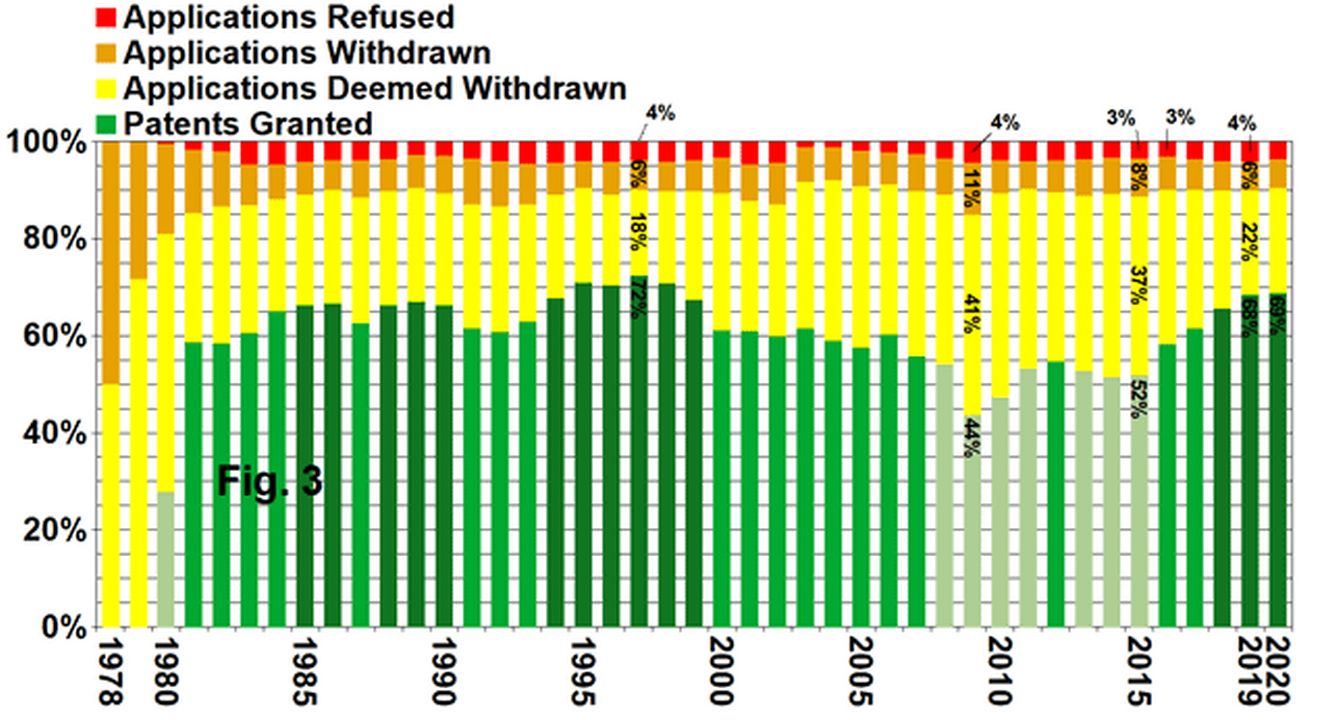
The current grant rate at the EPO is around 69% (2020). Historically, grant rates have been subject to significant fluctuation and they also vary widely across technical fields. Source: Haseltine Lake Kempner.
The overall "grant rate" at the EPO is the ratio of granted patents to applications averaged across all technical fields. This currently stands at around 69% (based on the published data for 2020).
"At one point during the 1990s the grant rate rose to a peak of 72% (1997) before dropping back closer to the 60% mark during the early years of the new millennium."In 2007, under the presidency of Alison Brimelow, the EPO was reportedly "faced with public perception that the barrier to patenting is too low". This led to the initiation of a process of "strategic renewal" aimed at "raising the bar on patent quality". (warning: epo.org link)
As a result of Brimelow’s "raising the bar" initiative, grant rates dropped to a historic low in 2009 - 42% according to official EPO figures from 2016 or 44% according to other sources.
According to official EPO figures, the grant rate started to rise again slightly under Benoît Battistelli from 2010 onwards, coming back close to the 50% mark in 2012, where it remained for a number of years thereafter.
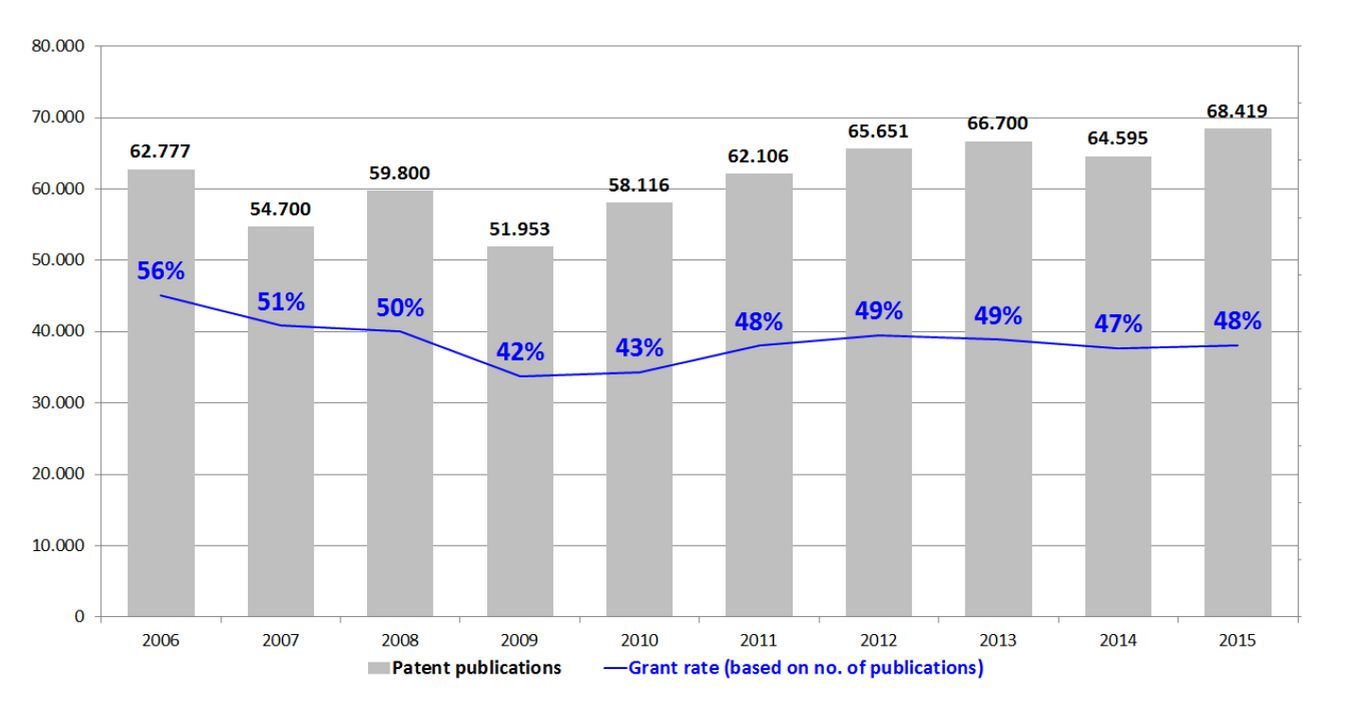
Official EPO grant rate figures between 2006 and 2015 (compiled in 2016).
"As we shall see in a later part of the series, one director recently saw fit to point out to his subordinates that grant rates of 99.6% are par for the course in some fields (predominantly in the mechanical sector)."In other words, it conceals the fact that grant rates vary widely across technical fields.
As we shall see in a later part of the series, one director recently saw fit to point out to his subordinates that grant rates of 99.6% are par for the course in some fields (predominantly in the mechanical sector).
Other areas have significantly lower grant rates. For example in 2020, it was reported (warning: epo.org link) that the grant rate in the Biotech sector was around 30%.
Low grant rates are also typical for many areas within the Information & Communication Technology (ICT) sector.
In a puff-piece about "Artificial Intelligence" (AI) published in 2021, IAM reported [PDF] that the number of grants in the this area (CPC class G06N) was increasing but remained significantly lower than in other fields:
The 40% grant rate for AI (G06N) applications in 2020 [is] well behind the EPO’s overall 69% grant rate in the same year, while the 16% refusal rate in 2020 was far higher than the overall 4% EPO refusal rate.

In 2010, EPO insiders Closa, Gardiner, Giemsa and Machek reported on grant rates of around 7% in the area of computer-implemented business and administrative methods (G06Q).
"During this time the grant rate remained relatively stable, hovering somewhere around the 2% mark."The point here is that, notwithstanding the "surge" from 2016 onwards, grant rates for G06Q still remain at a very low level compared to the EPO’s overall grant rate of 69%.
However, rumours currently circulating inside the EPO indicate that things may be about to change dramatically in this area.
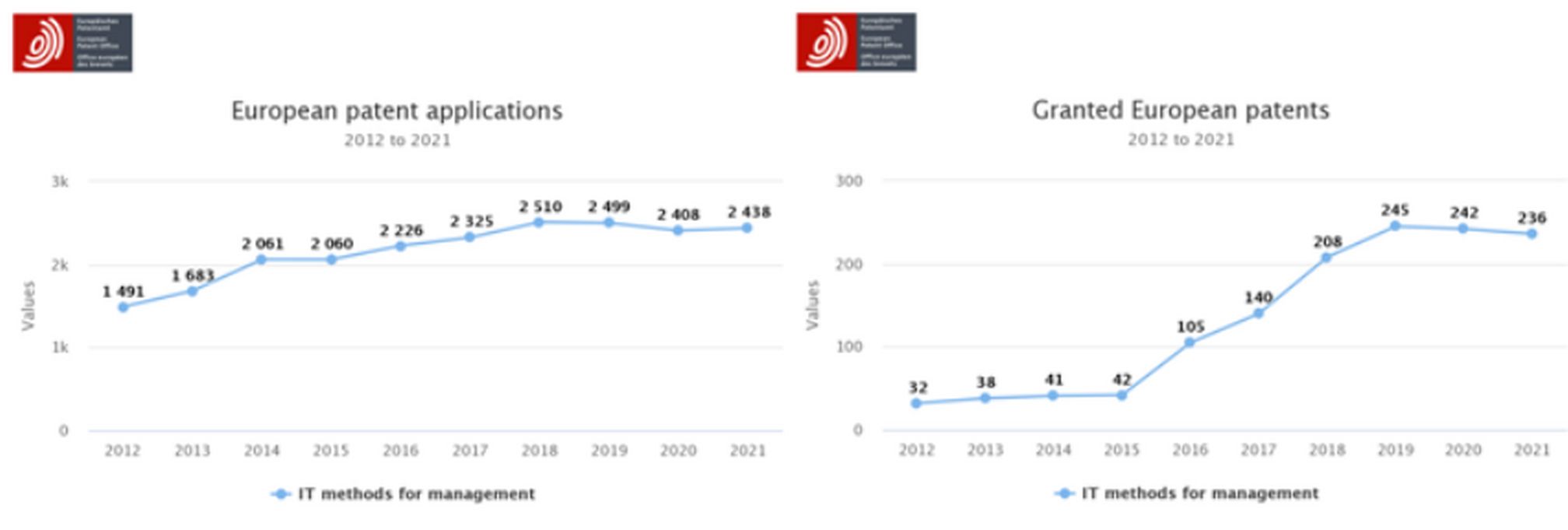
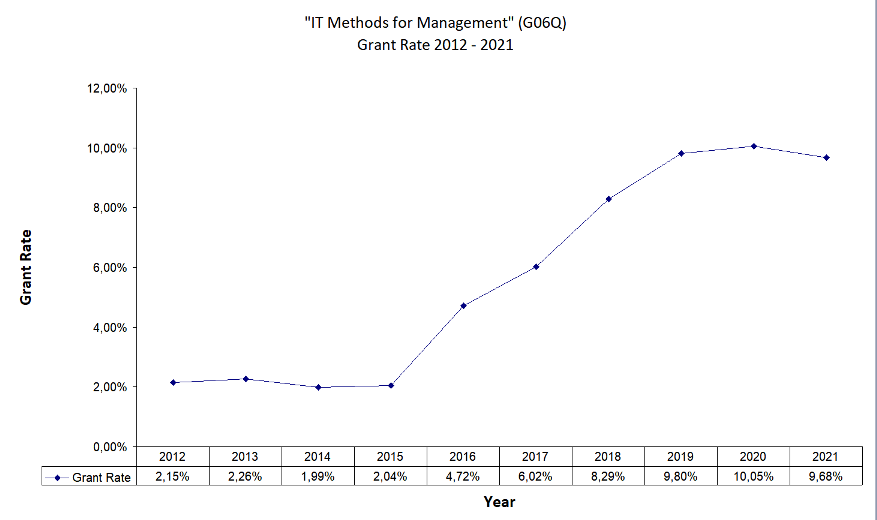
Despite a significant "surge" from 2016 onwards, grant rates in the G06Q area remain quite low, currently around 10%. However, rumours on the EPO grapevine suggest that this could be about to change dramatically.
"Under these circumstances, it is not at all surprising that Team Campinos is being forced to explore alternative strategies for propping up the "grant bubble" created by Battistelli."However, there are limits to the management’s ability to squeeze more "products" out of an already "sweated" workforce.
Under these circumstances, it is not at all surprising that Team Campinos is being forced to explore alternative strategies for propping up the "grant bubble" created by Battistelli.
One idea which has been touted in management circles is to push for a "harmonisation" of grant rates across different technical fields. It goes without saying that the "hidden agenda" here is a push for "upward harmonisation" in areas which historically have low grant rates. A particular focus of attention in this regard is the ICT sector.
The managerial thinking on this score is that, if examiners working in such areas could be "persuaded" to issue less refusals and more grants, this could help to prop up flagging grant numbers.
So far the desire for increased "harmonisation" of grant rates has remained an unfulfilled managerial fantasy.
However, certain personnel changes connected with an EPO-wide "reorganisation" in April of this year [PDF], suggest that efforts are now afoot to transform this managerial "fantasy" into reality.
"So far the desire for increased "harmonisation" of grant rates has remained an unfulfilled managerial fantasy."More precisely, in the context of the EPO’s latest internal "reorganisation", the three "Chief Operating Officers" (COOs) responsible for different technical sectors within the Patent Examination Directorate DG1 were replaced by a single COO with global responsibility for all DG1 examination "Operations".
Previously, examination directorates were grouped into three main technical sectors - Mechatronics & Mobility, Healthcare, Biotechnology & Chemistry and Information & Communication Technology (ICT) - with a separate COO in charge of each sector.
Now there is a single COO who is responsible for all technical sectors from "Agri-Food", through "Mobility and Space Technologies", "Electronics and Physics" to "Materials and Production".
BEFORE
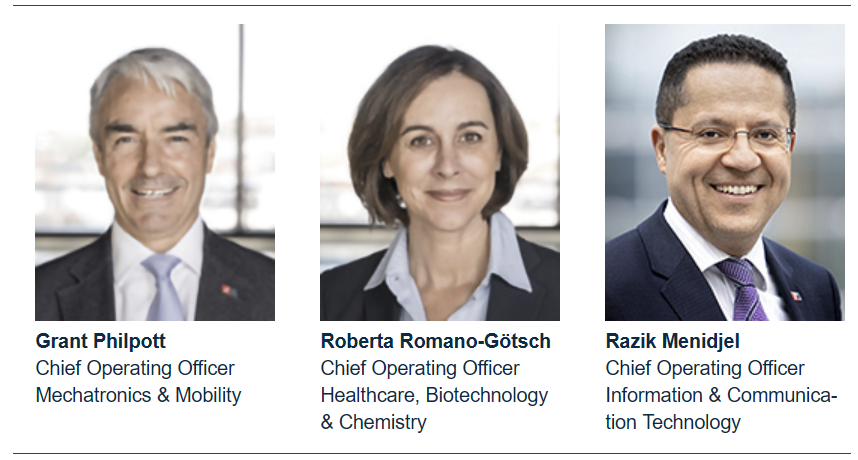
Previously there were three COOs, each in charge of a distinct technical sector.

Now there is only a single COO with global responsibility for all sectors.